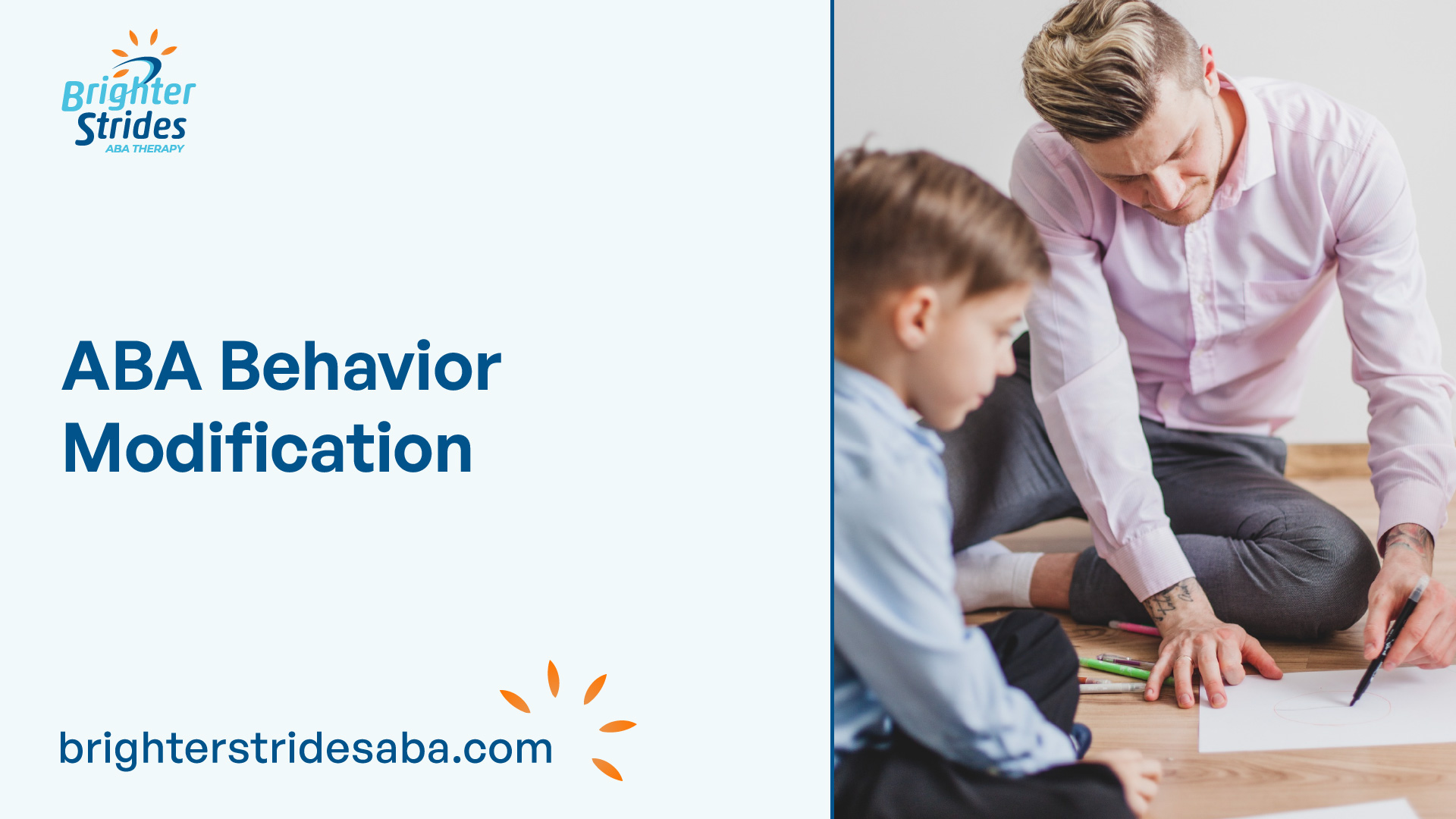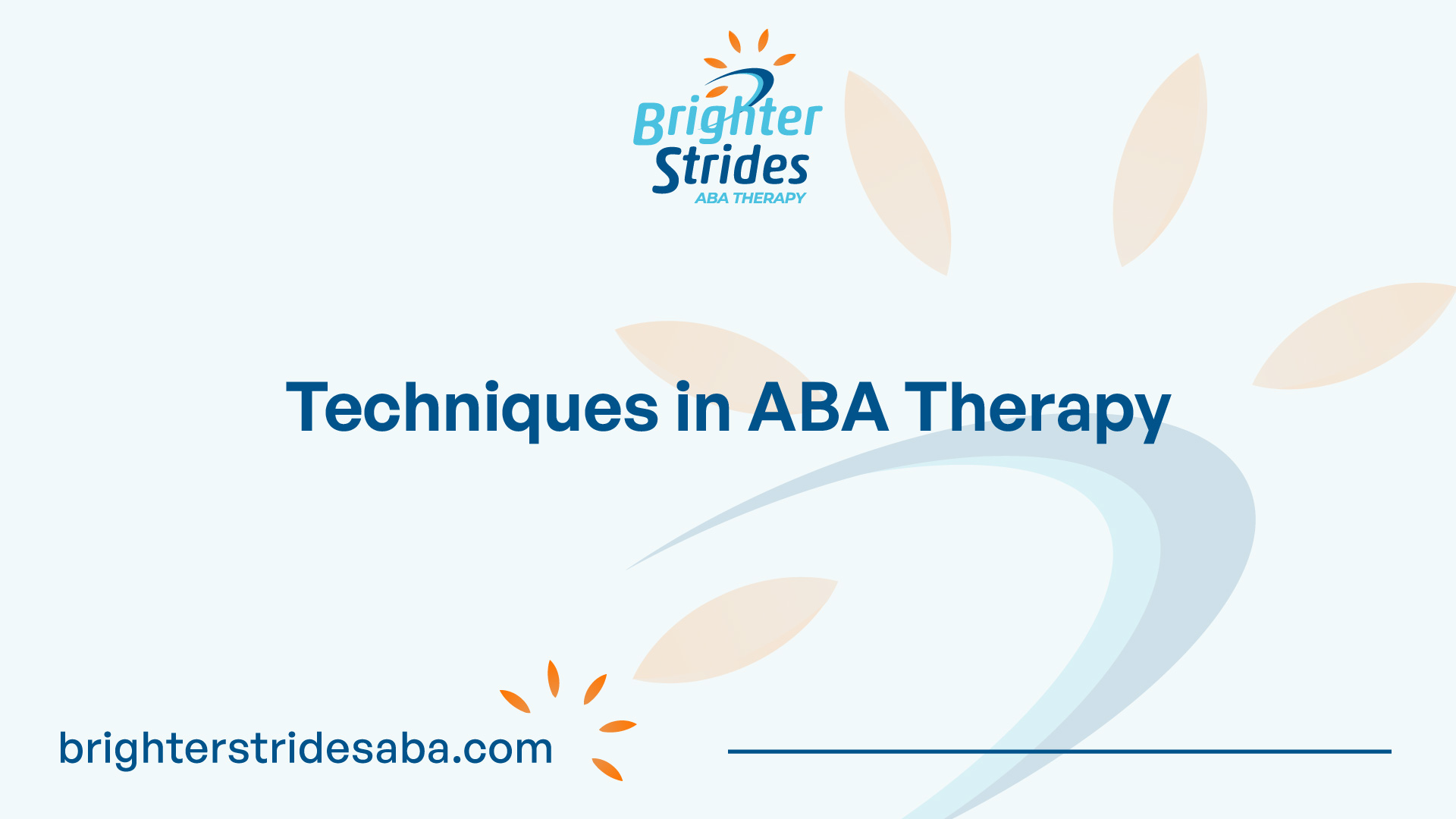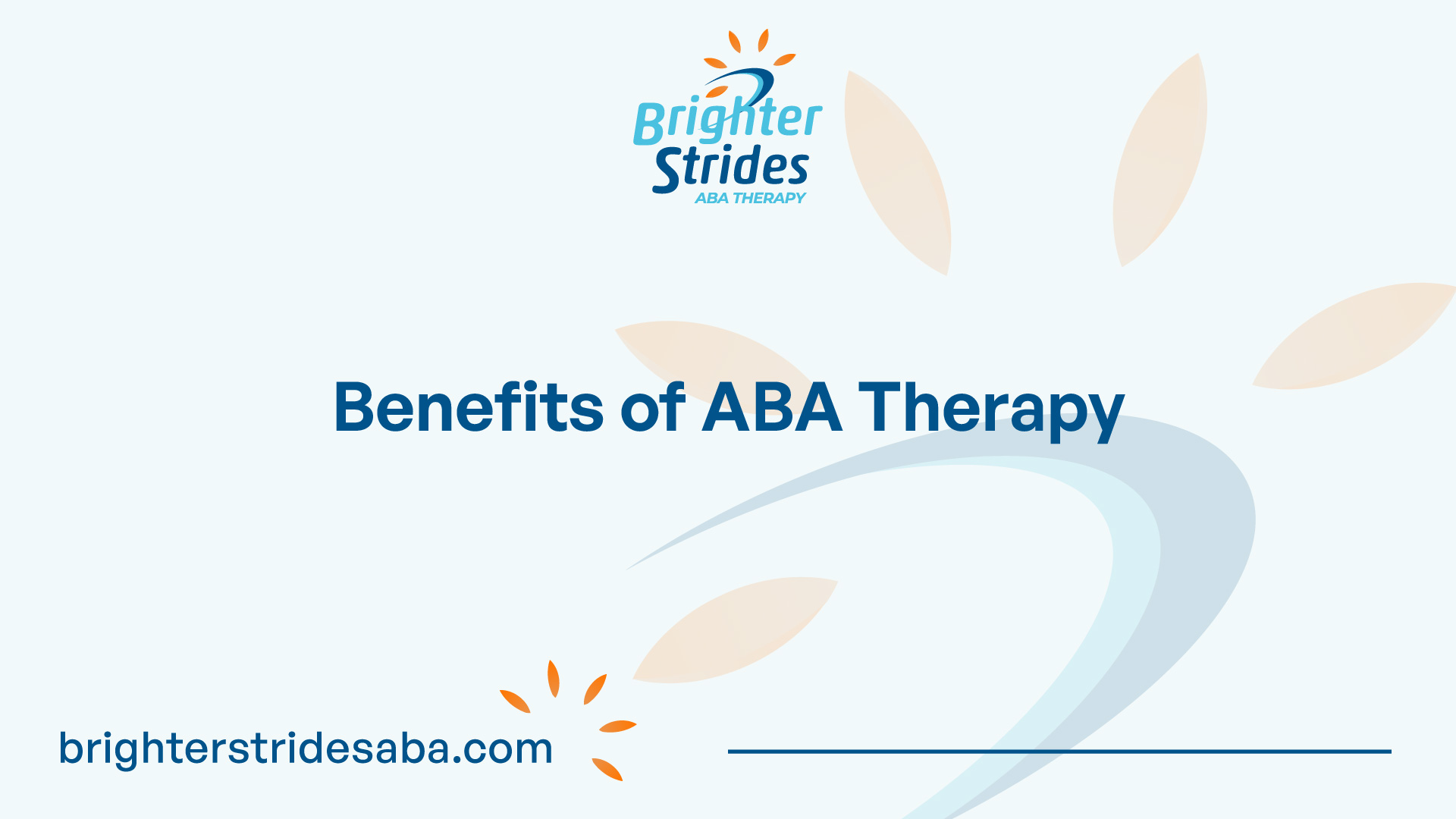
Understanding ABA Therapy
ABA therapy, which stands for Applied Behavior Analysis, is a widely recognized and evidence-based approach for individuals with autism. This therapy focuses on understanding and modifying behavior to improve social, communication, and self-help skills in young children with autism during a key developmental period.
Principles of ABA Therapy
The core principles of ABA therapy revolve around using positive reinforcement to encourage desired behaviors, breaking down complex skills into manageable steps, and employing a child-led approach that allows for reinforcement in various forms. These principles provide a foundation for creating effective treatment plans and guiding behavior change strategies.
Dimensions of ABA Therapy
ABA therapy encompasses several dimensions that contribute to its effectiveness. These dimensions are crucial for behavior analysts and behavior technicians to develop engaging and effective treatment plans for children with autism.
- Applied: ABA therapy focuses on addressing socially significant behaviors that have a meaningful impact on an individual’s daily life. The therapy targets behaviors that enhance independence, communication, and social skills.
- Behavioral: ABA therapy emphasizes the analysis and modification of behavior, as behavior is viewed as a product of environmental factors. By understanding the antecedents that trigger behaviors and the consequences that maintain them, behavior analysts can develop strategies to promote positive behavior change.
- Analytic: ABA therapy relies on data collection and analysis to ensure that the treatment techniques used are effective. This analytical approach helps behavior analysts track progress, make data-based decisions, and modify strategies as needed to achieve desired outcomes.
- Technological: ABA therapy focuses on using clear and objective procedures that can be replicated by different professionals. A well-defined and systematic approach ensures consistency and allows for effective collaboration among individuals involved in the therapy process.
- Conceptually Systematic: ABA therapy is guided by behavioral principles that have a foundation in scientific research. These principles are based on a conceptual understanding of behavior analysis and are systematically applied to promote positive behavior change.
- Effective: ABA therapy aims to produce meaningful and lasting behavior change. Treatment plans are designed to maximize progress and help individuals reach their full potential in various areas of their lives.
- Generality: ABA therapy strives to generalize skills across different environments and situations. The goal is to ensure that individuals can apply learned skills beyond the therapy setting, enabling them to function effectively in their everyday lives.
Understanding the principles and dimensions of ABA therapy provides insight into the comprehensive and evidence-based nature of this approach. By incorporating these principles and dimensions, behavior analysts and therapists can develop effective treatment plans tailored to meet the unique needs of individuals with autism.

Techniques in ABA Therapy
ABA therapy utilizes various techniques to modify behavior effectively. These techniques are designed to break down skills into manageable steps and create positive change. Three important techniques in ABA therapy are Discrete Trial Training (DTT), Antecedent-based Interventions (ABI), and Extinction.
Discrete Trial Training (DTT)
Discrete Trial Training (DTT) is a major teaching strategy in ABA therapy. It involves breaking down skills into small, distinct elements and providing positive reinforcement after each correct response to the discrete element being taught. DTT is a structured instructional technique used in ABA to teach a skill or behavior in simplified and isolated steps. This technique allows for focused and repetitive practice, helping individuals with autism learn new skills more effectively.
By breaking down complex behaviors into smaller components, DTT enables individuals to master one step at a time before progressing to the next. The use of positive reinforcement, such as praise or rewards, reinforces correct responses and motivates individuals to continue learning and practicing. This technique promotes skill acquisition, independence, and generalization of skills to various settings.
Antecedent-based Interventions (ABI)
Antecedent-based Interventions (ABI) in ABA therapy focus on modifying the environment to reduce the likelihood of triggering interfering behaviors. This technique aims to prevent challenging behaviors from occurring by altering the antecedents or events that precede those behaviors [2]. ABI can involve strategies such as offering choices to children to reduce defiant behavior. By modifying the environment and providing individuals with alternative options, ABI helps create a more supportive and conducive setting for learning and positive behavior.
Antecedent-based Interventions are based on the understanding that behavior is influenced by the environment. By addressing the antecedents, such as providing clear instructions, visual cues, or rearranging the environment, ABI helps individuals with autism better understand expectations and respond more appropriately. This technique empowers individuals to make better choices and engage in more desirable behaviors.
Extinction in ABA Therapy
Extinction is a procedure used in ABA therapy to reduce problem behaviors. It involves pairing the problem behavior with a lack of reinforcement or removal of the reinforcement that previously maintained the behavior. By consistently not reinforcing the problem behavior, individuals learn that the behavior no longer produces the desired outcome. This process helps to decrease the occurrence of the problem behavior over time.
Extinction is typically implemented in a controlled and structured manner under the guidance of a trained therapist. It requires consistency and perseverance from both the individuals receiving therapy and their caregivers. Through extinction, individuals with autism can learn alternative, more appropriate behaviors that serve their needs and replace the problem behaviors.
By employing techniques like Discrete Trial Training (DTT), Antecedent-based Interventions (ABI), and Extinction, ABA therapy provides individuals with autism the tools and support they need to make positive changes in their behavior. These techniques, along with other strategies, contribute to the overall effectiveness of ABA therapy in improving social skills, communication, and promoting independence.
Strategies for Effective ABA Therapy
When it comes to ABA therapy, there are several strategies that contribute to its effectiveness. These strategies focus on understanding and modifying behavior to help individuals with autism and other developmental disorders. In this section, we will explore three key strategies: Functional Behavior Assessment (FBA), positive and negative reinforcement, and data-based decision making.
Functional Behavior Assessment (FBA)
A crucial aspect of ABA therapy is conducting a Functional Behavior Assessment (FBA). FBA is a systematic process used by ABA therapists to identify specific behaviors, determine their purpose, and understand the factors that maintain these behaviors. This assessment forms the basis for developing targeted interventions to help the individual learn and grow [2].
By conducting an FBA, the therapist gains insights into the underlying causes and functions of challenging behaviors. This understanding enables the development of interventions that address the root causes of behavior rather than just the symptoms. Through FBA, therapists can create personalized treatment plans that effectively target and modify behaviors, leading to positive outcomes [3].
Positive and Negative Reinforcement
Positive and negative reinforcement are essential techniques used in ABA therapy. These techniques aim to reinforce desirable behaviors and deter undesirable behaviors. Positive reinforcement involves providing rewards or praise for exhibiting desired behaviors, which increases the likelihood of those behaviors being repeated. Negative reinforcement involves removing or avoiding aversive stimuli when desired behaviors occur, which also increases the probability of those behaviors being repeated.
These reinforcement techniques can be tailored to the individual’s preferences and needs. By consistently reinforcing positive behaviors, individuals with autism can be motivated to engage in those behaviors more frequently. The use of reinforcement helps to shape behavior and promote skill acquisition [4].
Data-based Decision Making
ABA therapy places a strong emphasis on data-based decision making. This involves the precise documentation of treatment strategies and the use of evidence-based practices and research-supported strategies. By collecting data and analyzing progress, therapists can make informed decisions and modify interventions as needed.
Data-based decision making allows therapists to evaluate the effectiveness of treatment plans, track the progress of individuals, and make adjustments based on the observed outcomes. This approach ensures that therapy techniques are tailored to the specific needs of each individual, maximizing the effectiveness of the interventions [1].
By employing strategies such as Functional Behavior Assessment (FBA), positive and negative reinforcement, and data-based decision making, ABA therapists can effectively address challenging behaviors and promote positive change in individuals with autism. These strategies, along with other techniques used in ABA therapy, contribute to the overall success of the treatment approach, helping individuals improve their social skills, communication, and overall independence.

Benefits of ABA Therapy
ABA therapy, known for its effectiveness in behavior modification, offers several benefits for individuals receiving treatment. By focusing on specific goals tailored to each individual’s needs, ABA therapy aims to achieve meaningful change and improve their overall quality of life. Let’s explore some of the key benefits of ABA therapy:
Social Skills Improvement
One of the primary objectives of ABA therapy is to enhance social skills. Through structured interventions and targeted strategies, individuals receiving ABA therapy can develop and improve their ability to interact effectively with others. This includes learning essential skills such as initiating and maintaining conversations, understanding non-verbal cues, and engaging in appropriate social behavior.
By employing various techniques and interventions, ABA therapy helps individuals with autism and other developmental conditions acquire the necessary skills to build meaningful relationships and navigate social situations confidently. These newly acquired social skills can lead to enhanced social inclusion and improve overall quality of life.
Communication Enhancement
ABA therapy is known for its effectiveness in improving communication patterns. Through the implementation of evidence-based techniques, individuals receiving ABA therapy can enhance their verbal and non-verbal communication skills. This includes developing vocabulary, articulation, expressive and receptive language skills, as well as understanding and using gestures and body language effectively.
By focusing on individualized treatment plans and utilizing strategies such as visual supports, prompting, and reinforcement, ABA therapy supports individuals in developing effective communication abilities. Improved communication skills not only enable individuals to express their needs and wants more effectively but also enhance their ability to engage in meaningful interactions with others.
Independence and Inclusion
ABA therapy places a strong emphasis on fostering independence and promoting inclusion for individuals receiving treatment. By targeting specific behaviors and skills, ABA therapy equips individuals with the tools necessary to become more self-sufficient in various aspects of their lives.
Whether it’s promoting independence in daily living skills, academic achievement, job proficiency, or fostering independence in social interactions, ABA therapy aims to empower individuals to reach their full potential. By breaking down complex tasks into smaller, manageable steps and utilizing positive reinforcement, individuals can develop the skills needed for greater independence and inclusion in society.
The benefits of ABA therapy extend beyond social skills, communication enhancement, and independence. It’s important to remember that the effectiveness of ABA therapy can vary depending on the individual and the specific goals of their treatment. However, with its evidence-based techniques and individualized approach, ABA therapy has the potential to make a positive and lasting impact on the lives of individuals with autism and other developmental conditions.
ABA Therapy Applications
Applied Behavior Analysis (ABA) therapy has proven to be a highly effective intervention for improving specific aspects of behavior and communication in individuals with Autism Spectrum Disorder (ASD) and other developmental conditions. ABA therapy can be applied in various settings to address the unique needs of individuals. Let’s explore three key applications of ABA therapy: educational settings, healthcare environments, and in-home interventions.
Educational Settings
ABA therapy has made significant contributions in educational settings, helping individuals with ASD and other developmental conditions achieve important milestones in independence and learning. In schools, ABA therapists work closely with teachers and other educational professionals to develop and implement ABA treatment plans tailored to each student’s needs.
In educational settings, ABA therapy focuses on improving a range of skills, including social interaction, communication, academic performance, and behavioral management. ABA therapists utilize ABA strategies such as discrete trial training, positive reinforcement, and data-based decision-making to promote skill acquisition and positive behavior change.
By implementing ABA techniques and interventions, educators can create a structured and supportive learning environment that maximizes the potential for growth and development in students with behavioral challenges.
Healthcare Environments
ABA therapy is also widely applied in healthcare environments to support individuals with ASD and other developmental conditions. In healthcare settings, ABA therapists collaborate with healthcare professionals, including psychologists, speech-language pathologists, and occupational therapists, to provide comprehensive care.
ABA therapy interventions in healthcare settings focus on areas such as social skills improvement, communication enhancement, and behavior management. For example, ABA techniques may be used to help individuals with ASD develop effective communication strategies and improve their ability to navigate social interactions.
By integrating ABA therapy into healthcare environments, individuals receive holistic care that addresses their unique needs and promotes their overall well-being.
In-home Interventions
In-home interventions are a vital component of ABA therapy. ABA therapists work directly with individuals in the comfort of their own homes, allowing for targeted interventions that address specific behaviors and skills in the individual’s natural environment.
In-home ABA therapy focuses on promoting independence, improving daily living skills, and strengthening family relationships. ABA therapists collaborate closely with family members to develop personalized goals and strategies that integrate seamlessly into the individual’s daily routines.
By providing interventions in the home setting, ABA therapists can create a supportive and familiar environment that facilitates skill generalization and long-term behavior change.
Overall, ABA therapy has a wide range of applications across educational settings, healthcare environments, and in-home interventions. Its adaptability and evidence-based approach make it a powerful tool for improving behavior and communication in individuals with ASD and other developmental conditions. By harnessing the power of ABA therapy in these various settings, individuals can achieve meaningful and lasting positive changes in their lives.
ABA Therapy Effectiveness
When it comes to ABA behavior modification, numerous studies have examined the effectiveness of ABA therapy for individuals with Autism Spectrum Disorder (ASD). Meta-analysis findings consistently demonstrate the positive impact of ABA interventions, making them one of the most effective evidence-based treatments for children with ASD.
Meta-analysis Findings
A meta-analysis of 29 studies on ABA interventions for children with ASD revealed promising outcomes across various domains. The overall standardized mean difference for autism general symptoms was d=-0.36, indicating a moderate effect size. Although not statistically significant, socialization showed a positive effect with a standardized mean difference of d=0.11. Communication also exhibited a trend towards improvement with a standardized mean difference of d=0.30. Notably, expressive language demonstrated a significant effect size with a standardized mean difference of d=-3.52. However, receptive language did not show a significant effect [5].
These findings suggest that ABA-based interventions have the potential to yield positive outcomes in socialization, communication, and expressive language for children with ASD. While more research is needed, these results provide promising evidence of the efficacy of ABA therapy.
A total of nine meta-analytic studies have been conducted to evaluate the effectiveness of ABA interventions for ASD. All of these studies consistently demonstrate the positive impact and effectiveness of ABA interventions, regardless of the methodology used to assess effectiveness [6]. The large number of studies included in these meta-analyses provides robust evidence supporting the effectiveness of ABA therapy for individuals with ASD.
Efficacy in Improving Skills
ABA therapy has been shown to have a significant impact on improving various skills in individuals with ASD. Studies have found that ABA interventions lead to improvements in intellectual abilities, communication skills, expressive and receptive language skills, IQ scores, adaptive behavior, and socialization [6]. These improvements can have a profound effect on the lives of individuals with ASD, enhancing their overall quality of life and increasing their independence.
Furthermore, ABA interventions have been found to reduce autism-related symptomatology and the need for support during school inclusion. Challenging behaviors, often associated with ASD, can also be effectively addressed through ABA therapy, leading to a reduction in these behaviors and an improvement in adaptive behavior.
In summary, ABA therapy has been widely recognized as an effective treatment for individuals with ASD. The evidence from meta-analysis studies consistently demonstrates the positive impact of ABA interventions, including improvements in intellectual abilities, communication skills, language development, adaptive behavior, and socialization. ABA therapy offers great potential for individuals with ASD to unlock positive change and enhance their overall well-being.

 We've just released an article! Check out our blog!
We've just released an article! Check out our blog! 


